Animal Removed From the Endangered Species List 2016
Summary Statistics
Summary Statistics
The numbers of species listed in each Red List Category change each time The IUCN Red List is updated. For each Red List update, IUCN provides summaries of the numbers of species in each category, by taxonomic group and by country.
To view and download the Summary Statistics Tables, click here.
The number of species listed in each IUCN Red List Category changes over time because:
- species are constantly being assessed and added to The IUCN Red List for the first time;
- other species are being reassessed resulting in some moving into different Red List Categories; and
- taxonomic revisions result in the total number of recognised species within a group changing.
All of the statistics presented in the summary tables are for species only (i.e., they do not include subspecies, varieties or geographically isolated subpopulations or stocks). More detailed analyses of specific taxonomic groups and the results of regional assessment projects can be found in the Resources & Publications section or in the regional pages for Europe, the Mediterranean, the Gulf of Mexico, and the Persian Gulf.
A dynamic Red List: reasons for changing status
In order to monitor the changing status of biodiversity, it is essential to reassess species periodically. This reassessment may result in species moving into a different Red List Category for non-genuine or genuine reasons:
Non-genuine reasons
- New information has become available since the last assessment (e.g., more recent data are available on population sizes, threatening processes, rates of decline or recovery, etc.).
- There has been a taxonomic revision resulting in the species no longer being the same concept as it was before (e.g., it is now split into several species each with smaller ranges, population sizes, etc.; or it has been merged with other species so the range, population size, etc. are now larger than they were previously).
- An error has been discovered in the previous assessment (e.g., the wrong information was used; the IUCN Red List Categories and Criteria were applied incorrectly; etc.).
- The previous assessment used an older version of the IUCN Red List Categories and Criteria and the reassessment uses the current criteria which have slightly different thresholds.

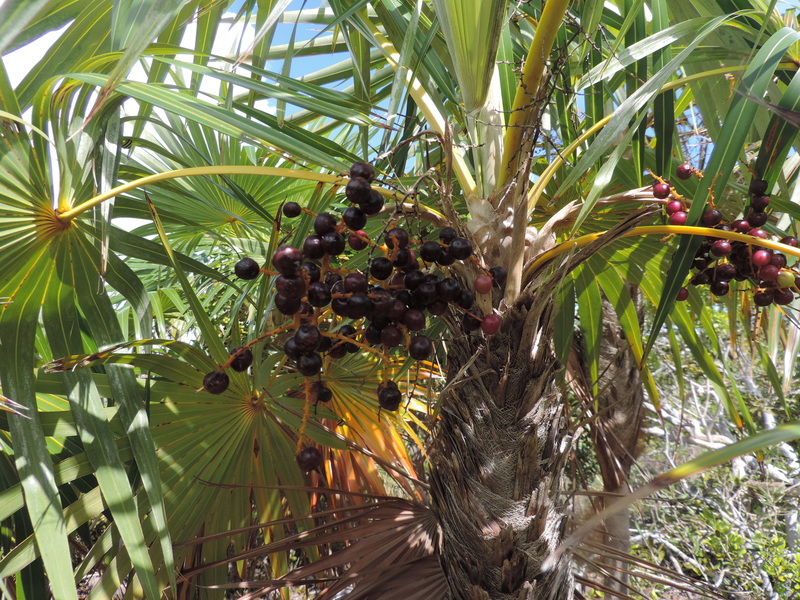
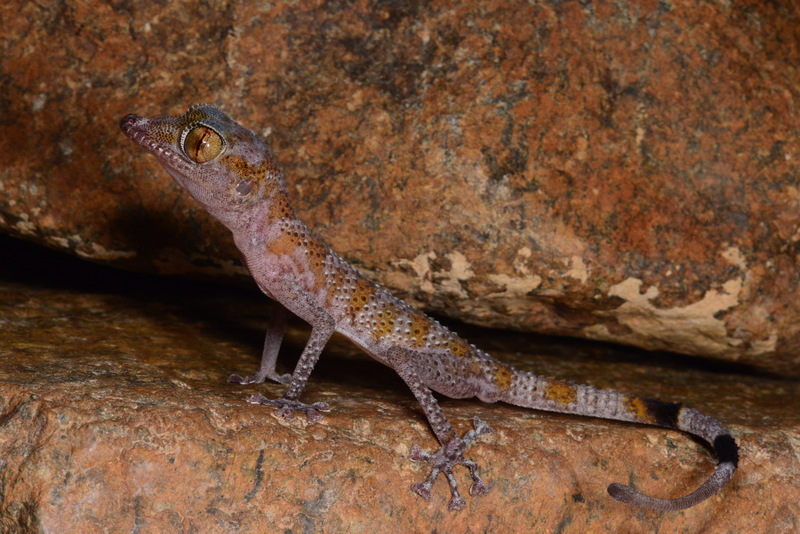
Genuine reasons
- The main threats are no longer present, or conservation measures (e.g., reintroduction, habitat protection or restoration, legal protection, harvest management, etc.) have successfully improved the status of the species enough to move it into a lower category of threat.
- The main threats have continued unabated, have increased, or new threats have developed causing the status of the species to deteriorate enough to move it into a higher category of threat.
IUCN relies on research by scientists working around the world to make new and better species information available to allow Red List assessments to be updated and refined. All reassessments on The IUCN Red List include a record of the reasons for any change in Red List Category, and this allows us to identify which species are genuinely improving or deteriorating in status. Data for species that are genuinely changing status are used to calculate the Red List Index (RLI).
Table 7 shows the list of species that have changed category, along with the reasons for these changes.
An expanding Red List: knowledge gaps and fully assessed groups
In addition to species changing status, The IUCN Red List grows larger with each update as newly described species and species from the less well-known groups are assessed for the first time (Figure 1). IUCN and its partners are working to expand the number of taxonomic groups that have full and complete Red List assessments in order to improve our knowledge of the status of the world's biodiversity; see the Barometer of Life page for more information about this work.
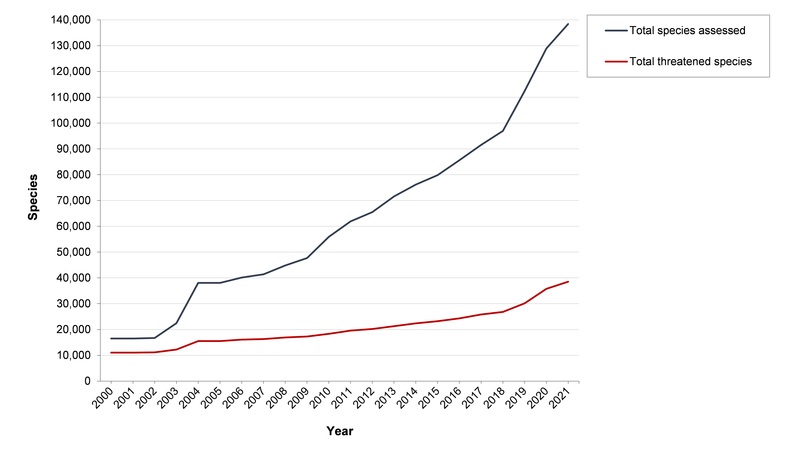 Figure 1. Increase in the number of species assessed for The IUCN Red List of Threatened Species™ (2000–2021; version 2021-2).
Figure 1. Increase in the number of species assessed for The IUCN Red List of Threatened Species™ (2000–2021; version 2021-2).
Not all taxonomic groups have been completely assessed (see Table 1 and Figure 2). It is very important to consider this when looking at the numbers of species in each Red List Category and the proportions of threatened species within each group; although The IUCN Red List gives a good snapshot of the current status of species, it should not be interpreted as a full and complete assessment of the world's biodiversity. For more information the work underway to expand taxonomic coverage on The IUCN Red List, see the Barometer of Life page.
How many species are threatened?
Species assessed as Critically Endangered (CR), Endangered (EN), or Vulnerable (VU) are referred to as "threatened" species. Reporting the proportion of threatened species on The IUCN Red List is complicated because:
- not all species groups have been fully evaluated, and
- some species have so little information available that they can only be assessed as Data Deficient (DD).
For many of the incompletely evaluated groups, assessment efforts have focused on those species that are likely to be threatened; therefore any percentage of threatened species reported for these groups would be heavily biased (i.e., the % threatened species would likely be an overestimate).
For those groups that have been comprehensively evaluated, the proportion of threatened species can be calculated, but the number of threatened species is often uncertain because it is not known whether DD species are actually threatened or not. Some taxonomic groups are much better known that others (i.e., they will have fewer DD species), and therefore a more accurate figure for proportion of threatened species can be calculated. Other, less well known groups have a large proportion of DD species, which brings uncertainty into the estimate for proportion of threatened species.
To account for the issues raised above, proportion of threatened species is only reported for the more completely evaluated groups (i.e., >80% of species have been evaluated). Also, the reported percentage of threatened species for each group is presented as a best estimate within a range of possible values bounded by lower and upper estimates:
- Lower estimate = % threatened extant species if all DD species are not threatened, i.e., (CR + EN + VU) / (total assessed - EX)
- Best estimate = % threatened extant species if DD species are equally threatened as data sufficient species, i.e., (CR + EN + VU) / (total assessed - EX - DD)
- Upper estimate = % threatened extant species if all DD species are threatened, i.e., (CR + EN + VU + DD) / (total assessed - EX)
Note that since extinction risk has been evaluated for less than 5% of the world's described species (see Table 1), IUCN cannot provide a precise estimate for how many of the planet's species are threatened. However, overall figures for numbers of species currently assessed in each Red List Category, along with an indication of which groups have been more comprehensively evaluated, can be found in the Summary Statistics Tables.
An overview of proportions of threatened species within each of the more comprehensively assessed groups is shown in Figure 2. Note that this bar chart groups comprehensively assessed groups of species into classes, with the exception of reef-forming corals (which is an ecosystem-based group that includes species from two separate classes: Anthozoa and Hydrozoa). The intention of this Figure is to present a summary of assessments for groups that have been comprehensively evaluated through the various projects carried out by IUCN, IUCN SSC Specialist Groups, and IUCN Red List Partners. Only groups containing at least 150 species are shown in Figure 2.

Figure 2. The proportion of extant (i.e., excluding Extinct) species in The IUCN Red List of Threatened Species. Version 2021-2 assessed in each category for the more comprehensively assessed (i.e., at least 80% of the group has been assessed) groups containing ≥150 species. Species are grouped into classes (with the exception of reef-forming corals, which includes species from classes Hydrozoa and Anthozoa), and are ordered according to the vertical red lines, which indicate the best estimate for proportion of extant species considered threatened (CR, EN, or VU). Best estimates of percentage threatened species (with lower and upper estimates) for each group are: cycads 63% (63-64%); amphibians 41% (34-51%); selected dicots (birches; cacti; magnolias; maples; oaks; protea family; southern beeches; teas) 38.5% (34-45%); sharks, rays & chimeras 37% (32-46%); selected reptiles (marine turtles; seasnakes; chameleons; crocodiles & alligators) 34% (29-45%); conifers 34% (34-35%); reef-forming corals 33% (27-44%); selected crustaceans (lobsters; freshwater crabs; freshwater crayfishes; freshwater shrimps) 28% (17-56%); mammals 26% (23-37%); birds 14% (13.5-14%); selected gastropods (cone snails) 7.5% (6-20%); selected bony fishes (anchovies; angelfishes; billfishes; blennies; bonefishes; butterflyfishes; cornetfishes; croakers & drums; denticle herring; dragonfishes, lightfishes & relatives; filefishes; ghost pipefishes; groupers; gulpers, snipe eels & relatives; jacks, pompanos & relatives; ladyfishes; lanternfishes; lizardfishes & allies; pristigasterids; pufferfishes; round herrings; sardines & relatives; seabreams, porgies & picarels; seahorses, pipefishes & relatives; shrimpfishes; sturgeons; Sundaland noodlefishes; surgeonfishes, tangs & unicornfishes; swordfish; tarpons; trumpetfishes; tunas; wolf herrings; wrasses) 6% (5-22%); cephalopods (nautiluses; octopuses; squids) 1.5% (1-57%). The numbers to the right of each bar represent the total number of extant species assessed for each group. EW - Extinct in the Wild, CR - Critically Endangered, EN - Endangered, VU - Vulnerable, NT - Near Threatened, DD - Data Deficient, LC - Least Concern.
Summary Tables
Tables 1 & 2: Threatened species in past and present IUCN Red Lists
Tables 1 and 2 are organized by taxonomic group and show numbers of threatened species listed in the current version of The IUCN Red List in relation to the estimated number of described species (Table 1a), and numbers of threatened species in each version of The IUCN Red List since 1996 (Tables 1b and 2). These tables highlight the disparity between the number of described species and the number of species that have been assessed. They also provide a summary of overall changes in numbers of threatened species on The IUCN Red List over the last twenty years, however please note that there are many different reasons for these figures changing between different versions of The IUCN Red List (see A Dynamic Red List: reasons for changing status above).
Tables 1 and 2 are currently available as PDF documents only.
-
Table 1a - Number of species evaluated in relation to the overall number of described species, and numbers of threatened species by major groups of organisms.
-
Table 1b - Numbers of threatened species by major groups of organisms (1996–2021).
-
Table 2 - Changes in numbers of species in the threatened categories (CR, EN, VU) from 1996 to 2021.
Tables 3 & 4: Summaries by taxonomic group
Tables 3 and 4 are organized by taxonomic group. These should be used to see, for example, the numbers of globally threatened mammals, birds and amphibians (Table 4 is an expanded version of Table 3).
These tables include number of species tagged as 'Possibly Extinct' (CR(PE)) and 'Possibly Extinct in the Wild' (CR(PEW)). These figures are included to give an upper estimate for total number of recently extinct species on The IUCN Red List. Combining the total numbers of EX and EW species gives the total number of actual extinctions recorded (since 1500 AD); when CR(PE) and CR(PEW) species are also included, the resulting figure is an estimate of number of recent extinctions when uncertainty is taken into account.
Tables 3 and 4 are interactive. Each column can be ordered (descending or ascending), and the numbers include links to search results on the website showing the lists of species represented in the tables.
-
Table 3 - Number of species in each IUCN Red List Category by kingdom and class.
-
Table 4a - Number of animal species (kingdom: Animalia) in each IUCN Red List Category by class and order.
-
Table 4b - Number of plant species (kingdom: Plantae) in each IUCN Red List Category by class and family.
-
Table 4c - Number of fungus species (kingdom: Fungi) in each IUCN Red List Category by class and order.
-
Table 4d - Number of chromist species (kingdom: Chromista) in each IUCN Red List Category by class and order.
Tables 5 & 6: Summaries by country
Tables 5 and 6 are organized by country. These should be used to see, for example, number of globally threatened mammals or the numbers of Critically Endangered species occurring within a specific country.
The figures presented in Tables 5 and 6 include only certain distributions, reintroduced species and regionally extinct species (i.e., the figures exclude all uncertain distributions, introduced species and vagrant records).
Important note : the figures presented in Tables 5 and 6 differ from the default setting for country searches on the website. The default search includes ALL occurrences within each country (i.e., including introduced species, vagrant records, etc.). To modify country searches on the website to match the tables below, use the Country Legends filters on the Advanced Search page to show species tagged as 'Extant', 'Extant & Reintroduced', 'Extinct', 'Extinct & Reintroduced', 'Possibly Extinct', and 'Possibly Extinct & Reintroduced'.
For wide-ranging marine species, country records are provided in assessments only where data are available for this. These records are also included in Tables 5 and 6.
Tables 5 and 6 are interactive. Each column can be ordered (descending or ascending), and the numbers include links to search results on the website showing the lists of species represented in the tables.
-
Table 5 - Number of threatened species (Critically Endangered, Endangered and Vulnerable categories only) in each major taxonomic group by country.
-
Table 6a - Number of animal species (kingdom: Animalia) listed in each IUCN Red List Category by country.
-
Table 6b - Number of plant species (kingdom: Plantae) listed in each IUCN Red List Category by country.
-
Table 6c - Number of fungi species (kingdom: Fungi) in each IUCN Red List Category by country.
-
Table 6d - Number of chromist species (kingdom: Chromista) in each IUCN Red List Category by country.
Table 7: Species changing Red List Category
Table 7 is organized by taxonomic group. This table should be used to check which species have changed Red List status since the previous Red List update and the main reason for the status change. Table 7 is provided here for the current Red List and for previous Red Lists (dating back to 2007).
Important Note: Table 7 is provided only to summarize the reasons for species changing category between one Red List update and the next. This table should not be used to calculate a Red List Index (RLI); for this it is necessary to analyse the underlying Red List data to identify genuine status changes between specific years for specific taxonomic groups. See the Red List Index page for more information about RLIs.
Table 7 is currently available as PDF documents only.
-
Table 7 (2020-2021) - Species changing IUCN Red List Category between 2020 and 2021.
-
Table 7 (2007-2020) - Species changing IUCN Red List Category each year between 2007 and 2020 (zip file containing separate tables for each year). Note that in 2007, Table 7 included species that were removed from the Red List for taxonomic reasons, and in 2008 Table 7 included genuine status changes only.
Table 8: Endemic species by country
Table 8 is similar to the country tables (Tables 5 and 6), but focus on endemic species only (i.e., species occurring naturally within one country only). This table only presents figures for the more comprehensively assessed species groups (i.e., where >80% of the species in the group have been assessed). Note that the Advanced Search page includes a filter for endemic species, which should be used in combination with the land regions filters to see lists of endemic species for all taxonomic groups.
Table 8 should be used to check, for example the total number of endemic mammals and number of threatened endemic mammals within a specific country.
Tables 8a, b and c are currently available as PDF documents only.
-
Table 8a - Total endemic and threatened endemic vertebrate species in each country for groups where >80% of species in the group have been assessed (totals by taxonomic group).
-
Table 8b - Total endemic and threatened endemic invertebrate species in each country for groups where >80% of species in the group have been assessed (totals by taxonomic group).
-
Table 8c - Total endemic and threatened endemic plant species in each country for groups where >80% of species in the group have been assessed (totals by taxonomic group).
Possibly Extinct species
The number of recent extinctions documented by the Extinct (EX) and Extinct in the Wild (EW) categories on The IUCN Red List is likely to be a significant underestimate. The tags 'Possibly Extinct' and 'Possibly Extinct in the Wild' have therefore been developed to identify Critically Endangered species that are likely to already be extinct (or extinct in the wild), but for which confirmation is required.
Figures for CR(PE) and CR(PEW) species (Table 9 in previous IUCN Red Lists) are now available in the automated summary statistics tables, which include embedded hyperlinks to the species lists in the Advanced Search page. To get the list of species only (i.e., excluding subspecies and varieties), make sure the Species checkbox is ticked (in the INCLUDE section in the bottom left of the Advanced Search page).
Animal Removed From the Endangered Species List 2016
Source: https://www.iucnredlist.org/resources/summary-statistics

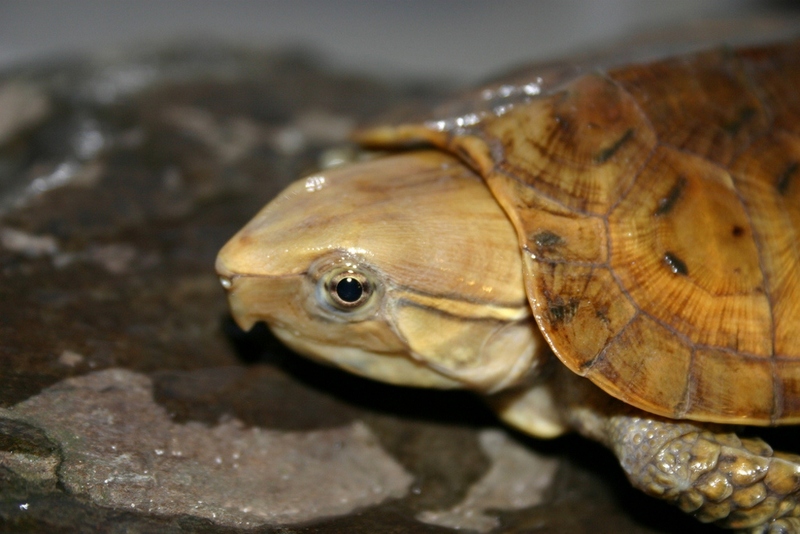
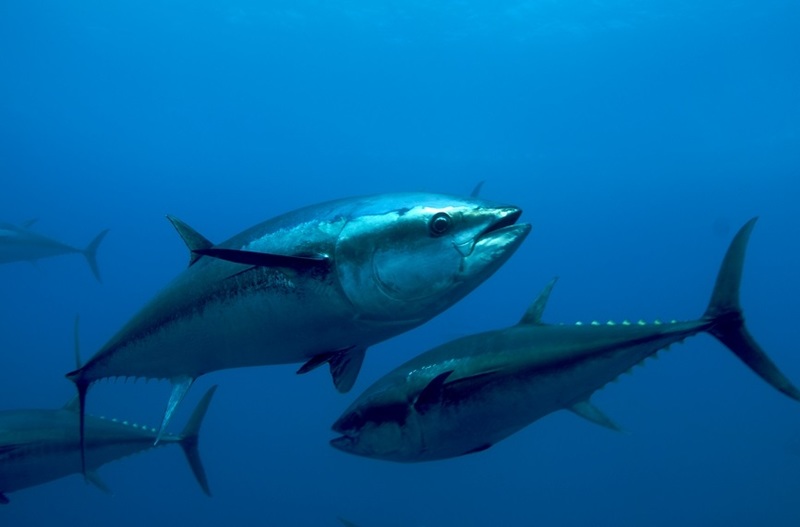
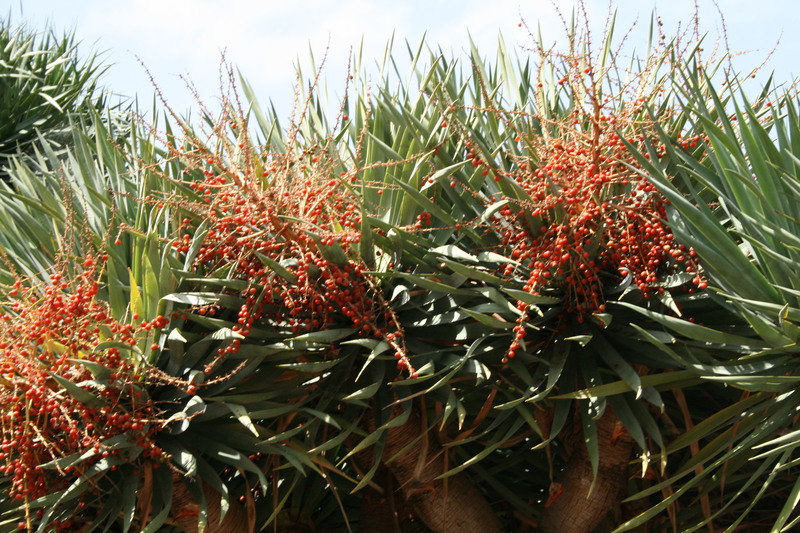
0 Response to "Animal Removed From the Endangered Species List 2016"
Post a Comment